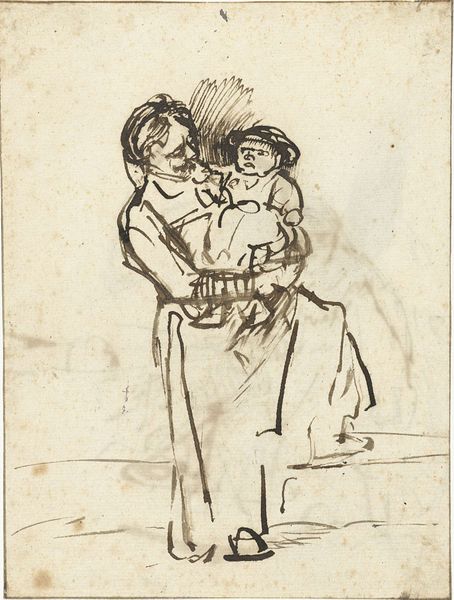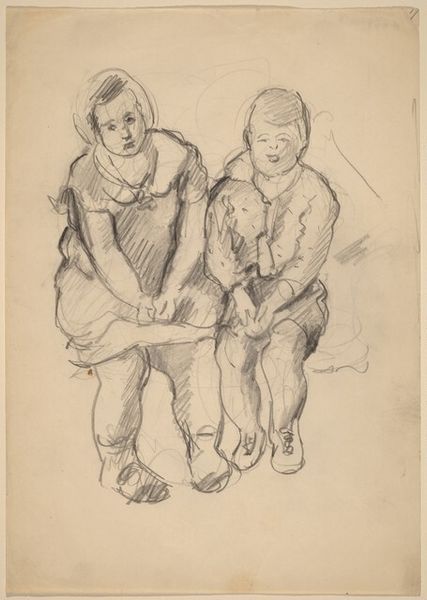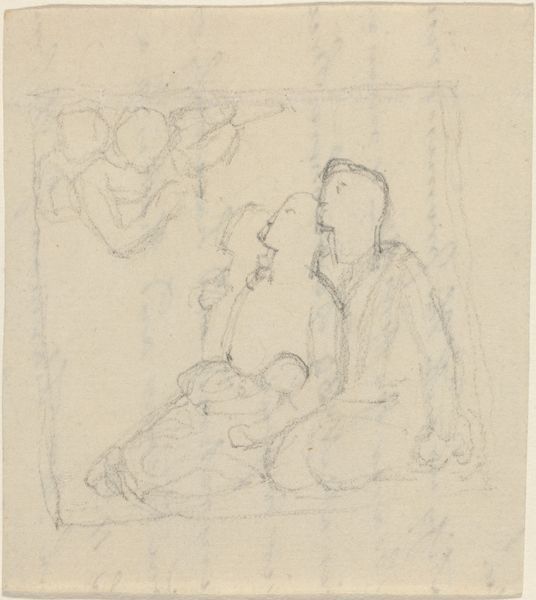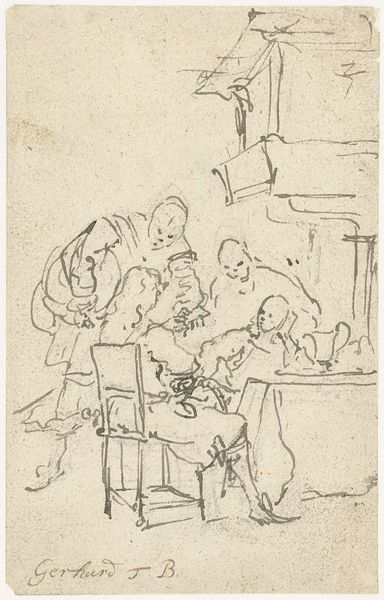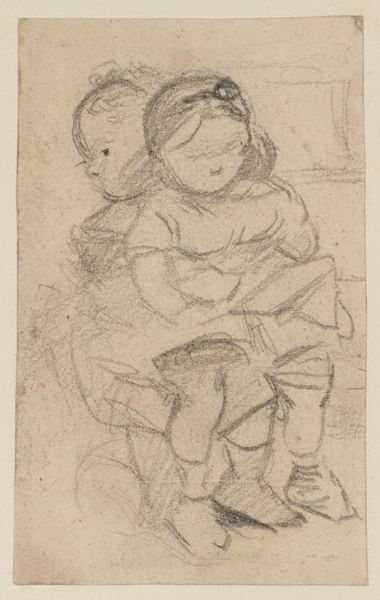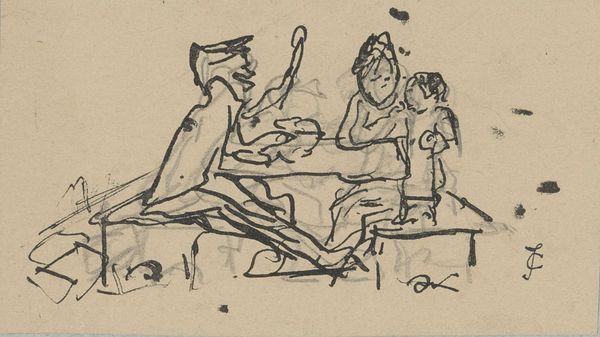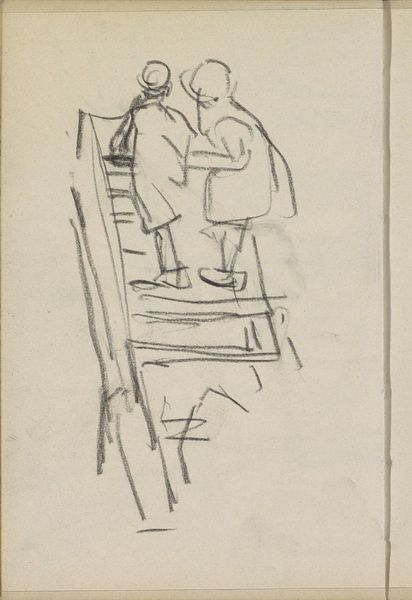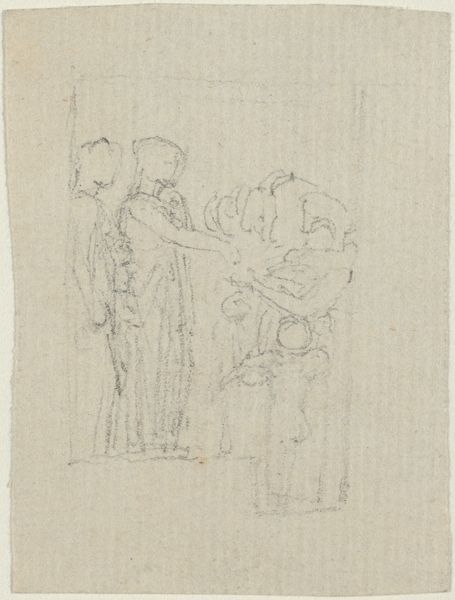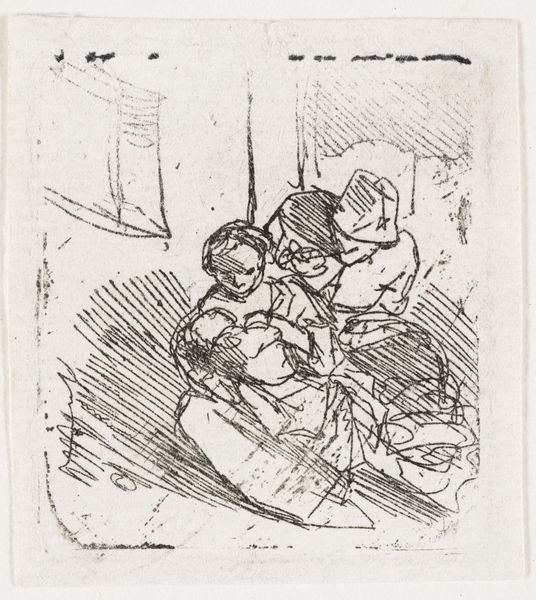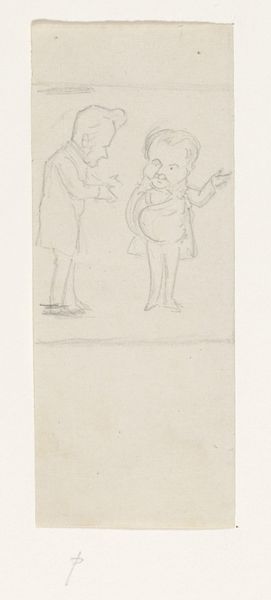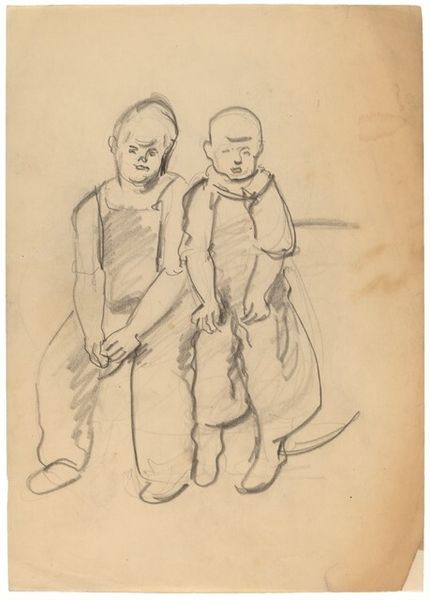
drawing, pencil
#
portrait
#
drawing
#
figuration
#
pencil
Dimensions: height 85 mm, width 73 mm, height 235 mm, width 164 mm
Copyright: Rijks Museum: Open Domain
Curator: At first glance, this pencil drawing by Gustave Joseph Chéret exudes a sense of childlike innocence. Editor: There's a tenderness in the graphite work itself—very soft and preliminary, like a memory recalled gently. The composition feels rather informal; the two children are not quite centered, but huddled on the right, lending a sense of unstudied authenticity to their pose. Curator: This piece, known as "Two Children with a Doll," and created around 1870 to 1894, represents an intimate snapshot into the lives of children during that era. Chéret, famed for his Belle Époque posters, also captured such glimpses into private domestic moments. Editor: Note how Chéret only lightly implies volume and form. The facial features are rendered minimally, and yet that simple shift in line captures so much character. See the suggestion of weight in how the children’s bodies press into one another? The subtle cross-hatching gives form to their rudimentary clothes. It’s all quite charmingly effective. Curator: Indeed. Consider that Chéret, while celebrating modernity and the urban spectacle, occasionally returned to the intimate, quiet settings within bourgeois life. Perhaps this drawing serves as a reflection on childhood and innocence, somewhat contrasting to the consumer-driven world depicted in his poster work. Editor: I find the doll held by the child on the left fascinating. Its form is almost purely symbolic; it seems like no more than two quick marks. The lack of detailed visual representation grants the viewer an access point for speculation, encouraging us to consider the importance of imagination during play. Curator: Certainly. It reminds us of the evolving definitions of childhood that came into public and artistic discourse during the 19th century, and it underscores art’s capacity for preserving what industrial modernity might overshadow. Editor: Reflecting upon the quick, ethereal marks, it underscores Chéret's skill at harnessing the emotionality inherent to raw pencil lines. This approach contrasts strikingly with his later color lithography practice. Curator: Looking at it through today's context, this drawing stands out because it urges contemplation on children's pastimes, encouraging discussions on shifting historical perspectives. Editor: Indeed. In retrospect, the visual sparseness gives a window into both an artist's process, and the fleeting magic that underscores childhood.
Comments
No comments
Be the first to comment and join the conversation on the ultimate creative platform.
